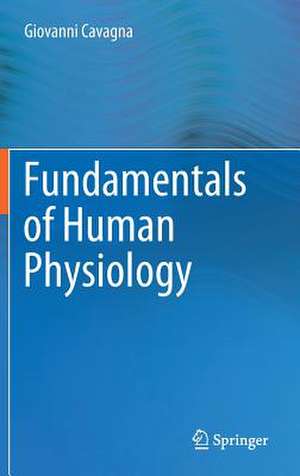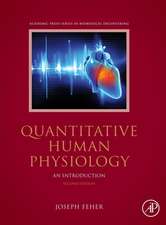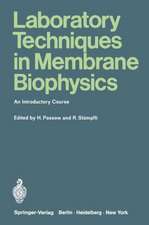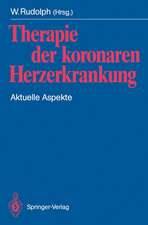Fundamentals of Human Physiology
Autor Giovanni Cavagnaen Limba Engleză Hardback – 26 iun 2019
The book offers the ideal learning resource for students ofhuman physiology courses in medicine and biomedicine, as well as biomedical engineering and biophysics graduate students. An elementary grasp of mathematics and physics is sufficient to understand the content.
| Toate formatele și edițiile | Preț | Express |
|---|---|---|
| Paperback (1) | 461.55 lei 6-8 săpt. | |
| Springer International Publishing – 14 aug 2020 | 461.55 lei 6-8 săpt. | |
| Hardback (1) | 721.69 lei 6-8 săpt. | |
| Springer International Publishing – 26 iun 2019 | 721.69 lei 6-8 săpt. |
Preț: 721.69 lei
Preț vechi: 759.66 lei
-5% Nou
Puncte Express: 1083
Preț estimativ în valută:
138.09€ • 144.57$ • 114.26£
138.09€ • 144.57$ • 114.26£
Carte tipărită la comandă
Livrare economică 05-19 aprilie
Preluare comenzi: 021 569.72.76
Specificații
ISBN-13: 9783030194031
ISBN-10: 3030194035
Pagini: 238
Ilustrații: XIV, 249 p.
Dimensiuni: 155 x 235 mm
Greutate: 0.57 kg
Ediția:1st ed. 2019
Editura: Springer International Publishing
Colecția Springer
Locul publicării:Cham, Switzerland
ISBN-10: 3030194035
Pagini: 238
Ilustrații: XIV, 249 p.
Dimensiuni: 155 x 235 mm
Greutate: 0.57 kg
Ediția:1st ed. 2019
Editura: Springer International Publishing
Colecția Springer
Locul publicării:Cham, Switzerland
Cuprins
Circulation of blood.- Muscle, locomotion and heart.- Respiration.- Kidney.
Notă biografică
Giovanni A. Cavagna is Emeritus Professor of Human Physiology at State University of Milan, Italy. His research has mainly focused on biomechanics and biophysics.
Textul de pe ultima copertă
This textbook explores the fundamental qualitative and quantitative aspects of human physiology. It approaches biological and physiological processes and phenomena from a quantitative perspective, revealing how physiological problems can be mathematically formulated starting from simple laws of physics. The book addresses a broad range of topics, including: the statics and dynamics of circulation; muscle and sarcomere force-length and force-velocity relations, together with their mechanisms and functional consequences; subdivisions and meaning of the heat produced by muscle; locomotion, statics and dynamics of respiration; diffusion of gases and acid base equilibrium; phonation; general functions of the kidney and of the different sections of the nephron; changes in clearance with a substance’s plasmatic concentration; pH regulation and the kidney; Donnan’s equilibrium and its consequences; and the Nernst equation.
The book offers the ideal learning resource for students ofhuman physiology courses in medicine and biomedicine, as well as biomedical engineering and biophysics graduate students. An elementary grasp of mathematics and physics is sufficient to understand the content.
The book offers the ideal learning resource for students ofhuman physiology courses in medicine and biomedicine, as well as biomedical engineering and biophysics graduate students. An elementary grasp of mathematics and physics is sufficient to understand the content.
Caracteristici
Highlights the marvelous strategies that Nature uses to solve difficult problems, such as isolated kidney auto-control, respiration-phonation meeting, and acid-base regulation, helping readers understand and appreciate them Links between sequentially taught topics and outside world experience are frequently made to associate knowledge as a single unit, which can be easily applied to different external conditions The simple experimental procedures and mathematical methods used help readers understand complex mechanisms such as blood circulation and respiration, osmotic work in the kidney, and oxygen diffusion to hemoglobin



























